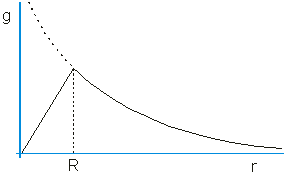|
|
 Originally Posted by JKDS

But, I don't appear to have a very strong (if any) gravitational field. Neither does a piece of tnt to my knowledge. Large bendy things (palm trees for example) don't seem to bend towards each other either, so it's not just tiny things that seem to not have a field.
You may be interested in looking at the Cavendish Balance experiment.
I have performed this experiment within the last 6 months.
Here's a video link showing some college student doing it
I spent an hour finding a video link that wouldn't bore the pants off of you, and where this one lacks explanation, it has a much needed time lapse to show the experiment being performed. Do a YouTube search for Cavendish experiment and you'll find plenty more info, including autobiographical excerpts of the weirdo that was Cavendish.
anyway...
What's in that video is a Cavendish balance. Find an image to help visualize it. It's 2 masses on a balanced rod. That rod is suspended by a thin wire. Mounted onto the rod/wire is a small mirror. Near, but not touching those masses are 2 much larger masses. The 2 large masses are arranged one on either side of the suspended rod, such that they are "leading" the smaller masses around. The 2 larger masses are on a separate balanced rod which the experimenter is free to rotate.
In the video, the experimenter starts with the experiment set up as described. He has left it in this position for a while... probably hours. It's probably the middle of the night to reduce foot traffic in the building and vehicular traffic outside. This experiment is that sensitive. Anyway. He remarks that the laser is pointed at a specific measure by his meter stick. The laser is pointed at that mirror I mentioned earlier. The mirror is fixed to the balance rod with the 2 small masses, and is used to amplify the angle of position of the rod. The laser is pointed so that the mirror is directing the beam perpendicular to the meter stick.
Now the experiment is primed and ready to go. He moves the large masses so that they are now opposite the other balls, but on the other side. In the starting position the large masses were leading the small masses clockwise. Then they are moved so that they are leading the smaller masses counterclockwise. Or vise versa. Symmetry makes the change irrelevant.
Then the video speeds up and he shows that the mirror undergoes a damped oscillation before coming to rest at a new position on the meter stick. The movement of the mirror is directly the related to the rotation of the balance rod with the small masses. The balanced rod has moved and come to rest at a new position, and the only change was the position of the large masses. Note again that the large masses are on a fully independent support from the smaller masses.
Gravity is real and measurable, even on the scale of a 2" lead ball for the large masses, which is what I used. The difference in angle measure is on the order of a few milliradians... it's subtle... but a tiny bit of trig and a measure of the distance from the mirror to the meter stick and you can solve it.
The actual math is a headache, but the proof is only 2 to 3 pages. Not too bad, considering the topic at hand. The reason it's as long as it is is due to the fact that you have to account for the fact that each of the large masses interacts with each of the small masses. Also, the rotating support for the large masses has its own mass that must be accounted for in order to get a good measurement.
 Originally Posted by JKDS

Perhaps you are saying that, like a piece of tnt, I am merely a piece of a giant ball that has gravity. Like the tnt, myself and the rest of the planet pieces are all acting as one thing, and our masses combine in such a way as to have noticable gravity. Such would explain why less dense smaller planets have less gravity.
The only reason the giant ball has gravity is because of the accumulated sum of all the atoms from which it is made having massive nucleons (protons and neutrons). The reason the smaller planets have lower mass is because they contain fewer nucleons (to an amazingly high precision).
 Originally Posted by JKDS

But, if this is the case, do objects in space tend to clump together? For example, on a trip to the moon (or mars), would free floating objects tend to group together?
How do you think stars and planets are formed? Hint: 'cause gravity pulls the particles in a nebula toward the local gravitational center, which is itself pulled to the next local gravitational center and vise versa and all around.
Yes, all objects tend to clump together... that's what gravity means.
Fun fact: There are asteroids that are loosely bound balls of gravel. I imagine they're all squirly and haven't really pulled themselves into a packed position because the forces expressed between each individual rock are so minuscule. Even still... when there's no other force around, that F = ma will become the dominant and overriding force... and given a few billion years... yeah... everything tends to clump together.
 Originally Posted by JKDS

If they were already grouped together, would an astronaut be drawn to them?
Yes. We're drawn to and drawing to us everything which we have the ability to see. Gravity travels at the speed of light. If its light can reach us, then our light can reach it and we are influencing each other via gravitation.
 Originally Posted by JKDS

So like, given time...We'd just have a big clump of space toys bundled loosely together?
That's a great way to describe the universe!
 Originally Posted by JKDS

Also, what are the lotto numbers.
https://www.arizonalottery.com/
|








 Reply With Quote
Reply With Quote

















